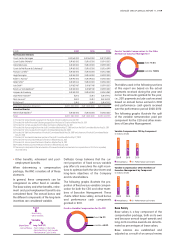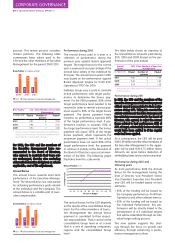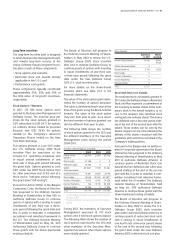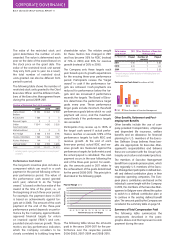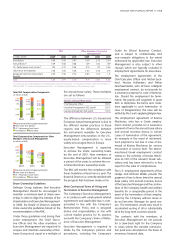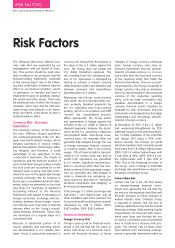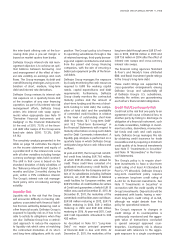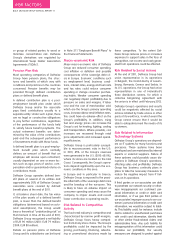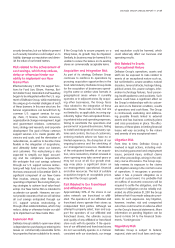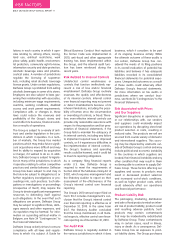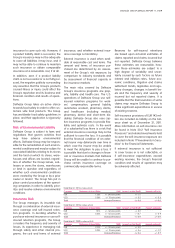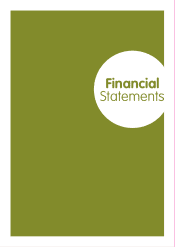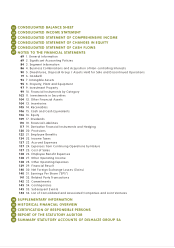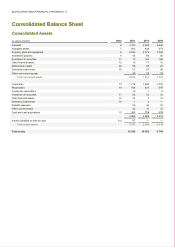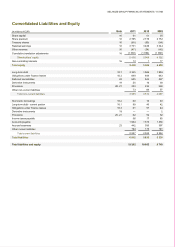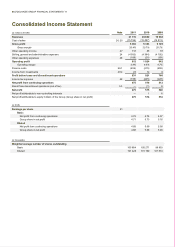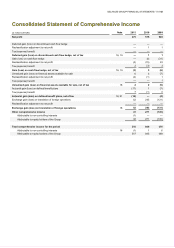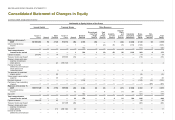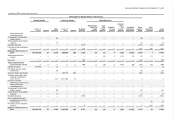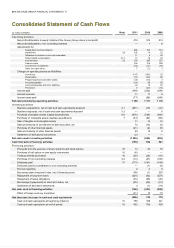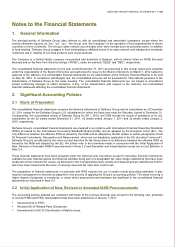Food Lion 2011 Annual Report Download - page 61
Download and view the complete annual report
Please find page 61 of the 2011 Food Lion annual report below. You can navigate through the pages in the report by either clicking on the pages listed below, or by using the keyword search tool below to find specific information within the annual report.
insurance to cover such risk. However, if
a product liability claim is successful, the
Group’s insurance may not be adequate
to cover all liabilities it may incur, and it
may not be able to continue to maintain
such insurance or obtain comparable
insurance at a reasonable cost, if at all.
In addition, even if a product liability
claim is not successful or is not fully pur-
sued, the negative publicity surrounding
any assertion that the Group’s products
caused illness or injury could affect the
Group’s reputation and its business and
financial condition and results of opera-
tions.
Delhaize Group takes an active stance
towards food safety in order to offer cus-
tomers safe food products. The Group
has worldwide food safety guidelines in
place, and their application is vigorously
followed.
Risk of Environmental Liability
Delhaize Group is subject to laws and
regulations that govern activities that
may have adverse environmental
effects. Delhaize Group may be respon-
sible for the remediation of such environ-
mental conditions and may be subject to
associated liabilities relating to its stores
and the land on which its stores, ware-
houses and offices are located, regard-
less of whether the Group leases, sub-
leases or owns the stores, warehouses
or land in question and regardless of
whether such environmental conditions
were created by the Group or by a prior
owner or tenant. The Group has put in
place control procedures at the operat-
ing companies in order to identify, prior-
itize and resolve adverse environmental
conditions.
Insurance Risk
The Group manages its insurable risk
through a combination of external insur-
ance coverage and self-insured reten-
tion programs. In deciding whether to
purchase external insurance or use self-
insured retention programs, the Group
considers the frequency and severity of
losses, its experience in managing risk
through safety and other internal pro-
grams, the cost and terms of external
insurance, and whether external insur-
ance coverage is mandatory.
External insurance is used when avail-
able at reasonable cost and terms. The
amount and terms of insurance pur-
chased are determined by an assess-
ment of the Group’s risk exposure, by
comparison to industry standards and
by assessment of financial capacity in
the insurance markets.
The main risks covered by Delhaize
Group’s insurance programs are prop-
erty, liability and health-care. The U.S.
operations of Delhaize Group use self-
insured retention programs for work-
ers’ compensation, general liability,
automotive accident, pharmacy claims,
and healthcare (including medical,
pharmacy, dental and short-term dis-
ability). Delhaize Group also uses cap-
tive insurance programs to provide flex-
ibility and optimize costs. In the event
of a substantial loss there is a risk that
external insurance coverage may not be
sufficient to cover the loss. It is possible
that the financial condition of an exter-
nal insurer may deteriorate over time in
which case the insurer may be unable
to meet the obligation to pay a loss. It
is possible that due to changes in finan-
cial or insurance markets that Delhaize
Group will be unable to continue to pur-
chase certain insurance coverage on
commercially reasonable terms.
Reserves for self-insured retentions
are based upon actuarial estimates of
claims reported and claims incurred but
not reported. Delhaize Group believes
these estimates are reasonable, how-
ever these estimates are subject to a
high degree of variability and uncer-
tainty caused by such factors as future
interest and inflation rates, future eco-
nomic conditions, litigation and claims
settlement trends, legislative and regu-
latory changes, changes in benefit lev-
els and the frequency and severity of
incurred but not reported claims. It is
possible that the final resolution of some
claims may require Delhaize Group to
make significant expenditures in excess
of existing reserves.
Self-insurance provisions of EUR 143 mil-
lion are included as liability on the bal-
ance sheet as of December 31, 2011.
More information on self-insurance can
be found in Note 20.2 “Self Insurance
Provisions” and related investments held
to cover the self-insurance exposure are
included in Note 11”Investments in Secu-
rities” to the Financial Statements.
If external insurance is not sufficient
to cover losses or is not collectable, or
if self-insurance expenditures exceed
existing reserves, the Group’s financial
condition and results of operation may
be adversely affected.
December 31, 2011 (in millions of EUR)
Currency Reference Interest Rate Shift Impact on Net Profit Impact on Equity
EUR 1.36% +/- 29 basis points +/- 0.1 -
USD 0.58% +/- 11 basis points -/+ 0.5 +/- 0.6
Total Increase/Decrease -/+ 0.4 +/- 0.6
December 31, 2010 (in millions of EUR)
Currency Reference Interest Rate Shift Impact on Net Profit Impact on Equity
EUR 1.01% +/- 16 basis points -/+ 0.2 -
USD 0.30% +/- 13 basis points -/+ 0.7 +/- 0.9
Total Increase/Decrease -/+ 0.9 +/- 0.9
December 31, 2009 (in millions of EUR)
Currency Reference Interest Rate Shift Impact on Net Profit Impact on Equity
EUR 0.70% +/- 13 basis points +/- 0.0 -
USD 0.25% +/- 11 basis points -/+ 0.6 +/- 0.7
Total Increase/Decrease -/+ 0.6 +/- 0.7
DELHAIZE GROUP ANNUAL REPORT ‘11 // 59


